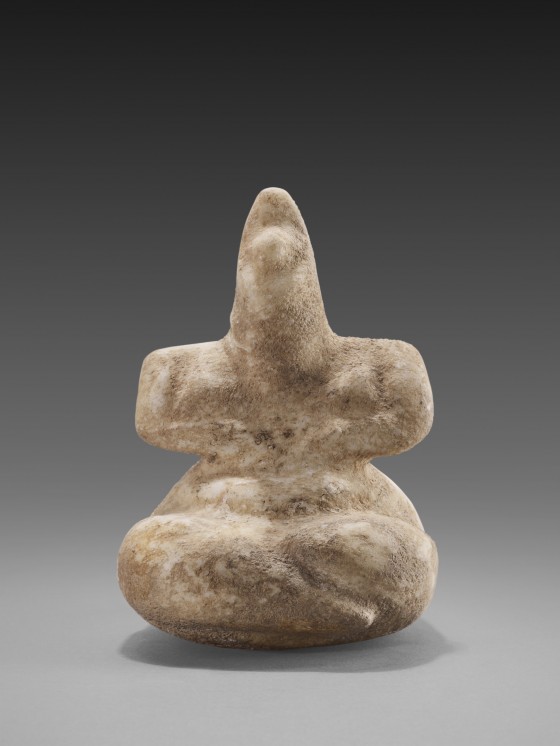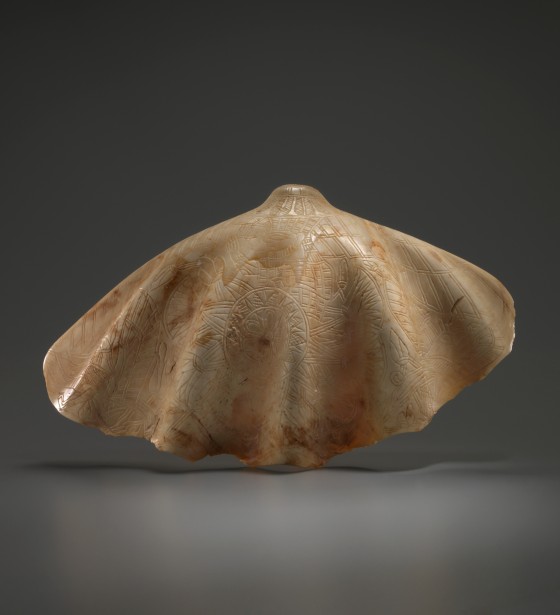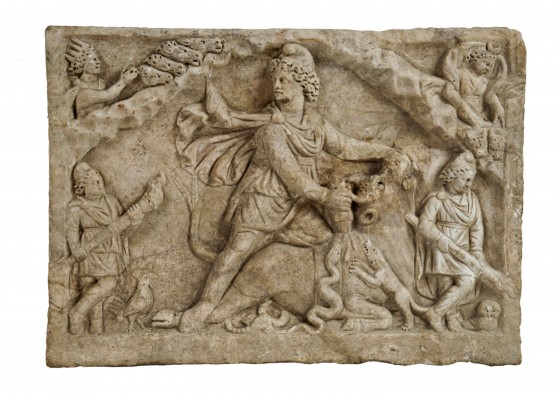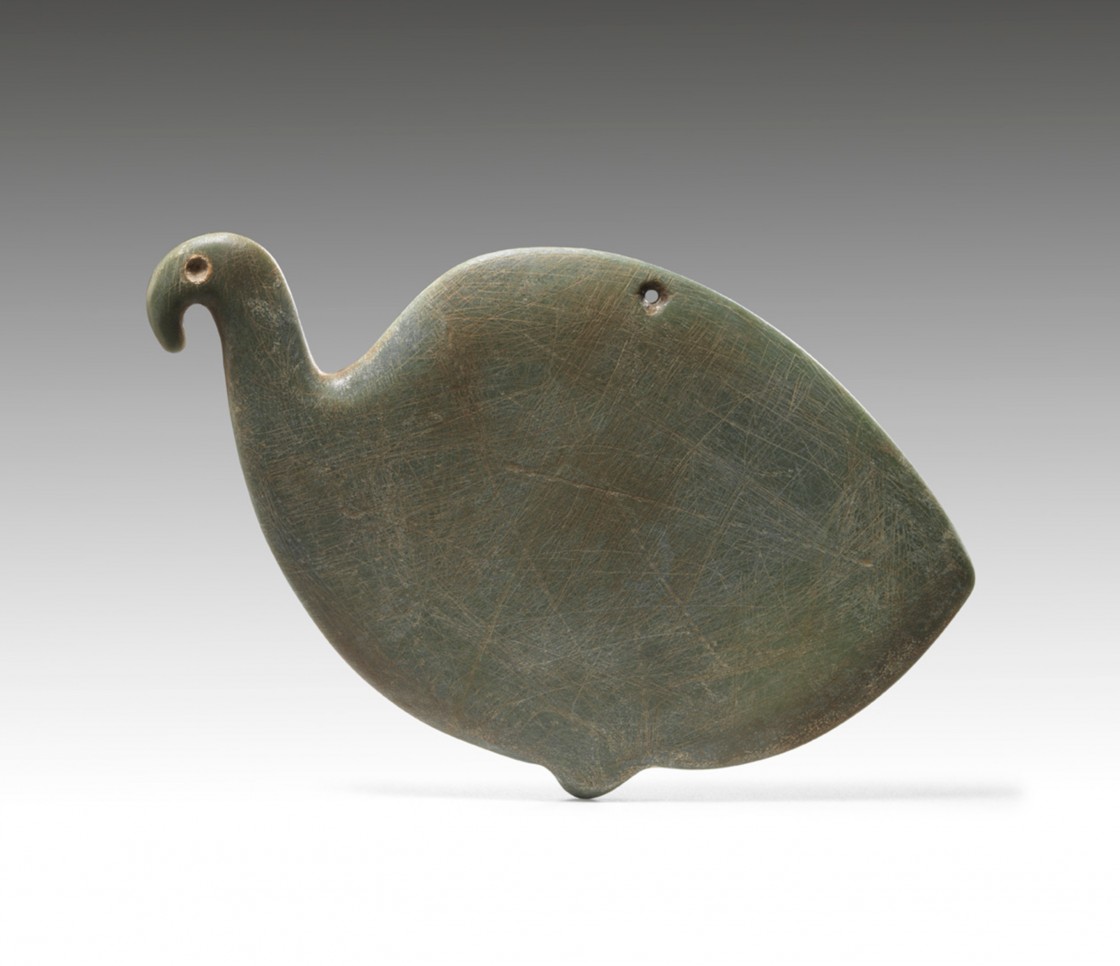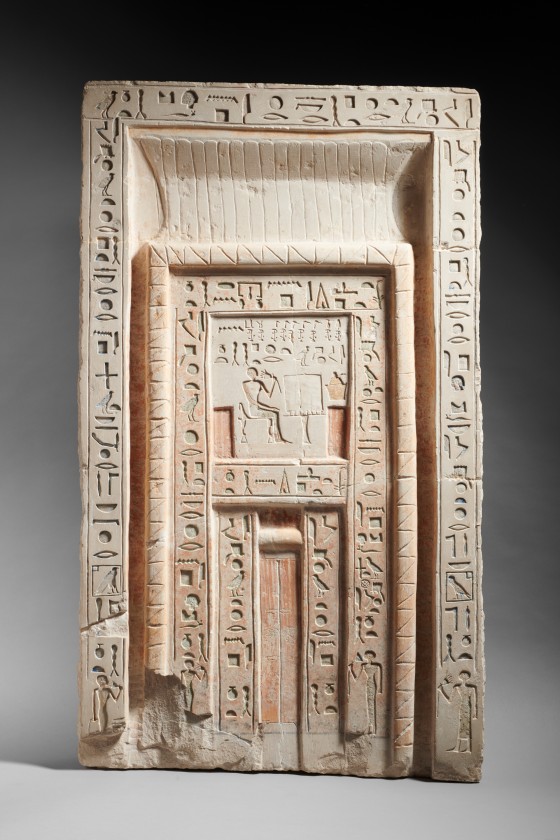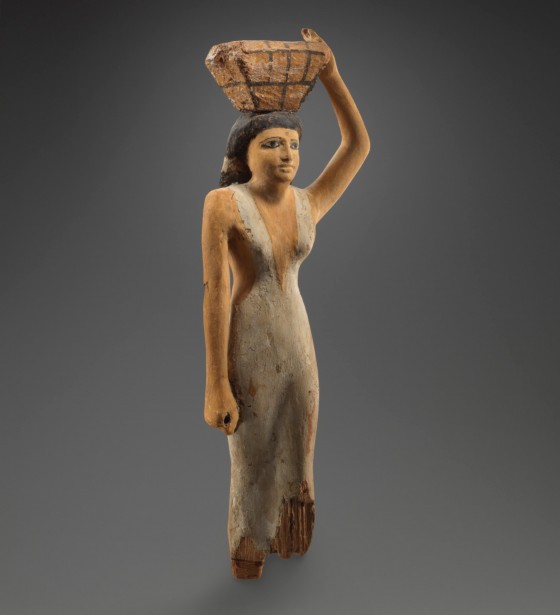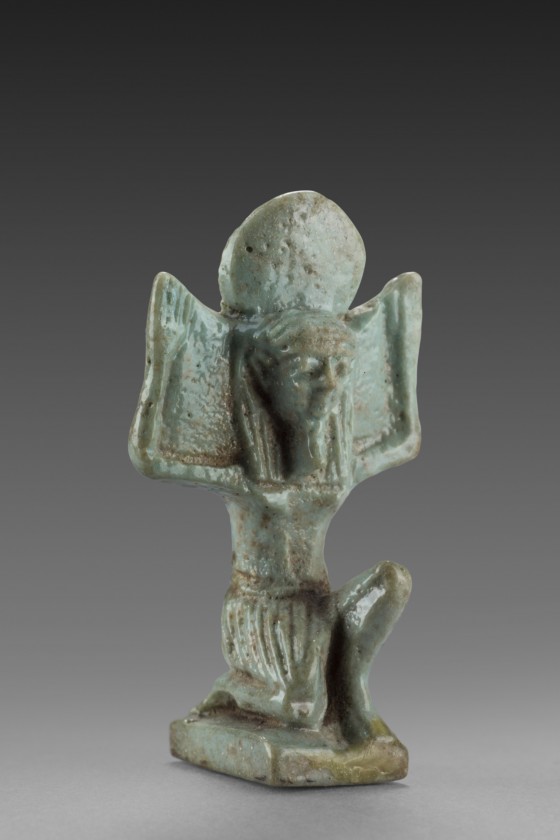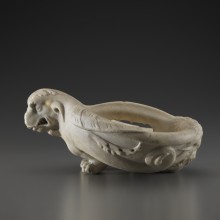
Archaeology
Rich of more than 1250 objects, the collection has Egyptian, Greek and Roman bronzes of great quality and a set of amulets composing one of the richest collections in the world.
In ancient times, the world was a threatening, dangerous place, believed to be governed by capricious gods, at once fearsome and benevolent. It is from this anxiety and the means of appeasing it that most of the objects in the collection of classical and Middle Eastern archaeology were born. They come from the Ancient Greek, Italic, Roman and Eastern civilizations, and surrounding cultures.
Religion in classical Antiquity: the common theme of the collection
This collection sheds light on the relationships that once existed between men and ancient belief systems. Objects, such as the ones present in this collection, allowed men to create a sense of connection with a celestial world populated by gods and goddesses. These deities were an important feature in the daily life of the Ancient Greek, Etruscan, Roman and Eastern civilizations: for the people living at that time, the gods were omnipresent.
A collection that reflects the diversity of the Ancient gods
Apollo, Dionysus, the Dioscuri, Zeus and Poseidon: sometimes these were depicted as Ephesian gods, kouroi, like the bust of a Dionysos Tauros (Alexandria, 2nd century BCE) or the marble statue of the Dioscuri found at Cap d'Agde (2nd century CE); other times they were depicted as patriarchal gods, like our model of Poseidon in bronze (Greece, 2nd century BCE). We also have examples of the ‘Great Goddess’, this nourishing deity, goddess of fertility, protector of women and children, whose steatopygous idols were prefigurations, known as Aphrodite or Venus in the classical world, and Astarte in the East.
Prepossessing beings, undoubtedly, but ones who continually demanded prayers, offerings and food from men in the form of the smoke fumes that came from animal sacrifices.
Ex-votos, vestiges of rituals destined to appease the gods
To invoke the gods, to ask them for protection or a blessing, and/or to thank them, were all acts that punctuated the life of men in ancient times. Ex-votos (offerings given to the gods in the hope of a favour or in thanks for a blessing) form an important part of the collection and date mainly from the period between the seventh century BCE and the fourth century CE. Examples include a bronze fish offered by fishermen to Apollo, in thanks for a plentiful catch. Greek, Roman and oriental silver and bronze sacrificial bowls evoke libations for the gods.
Animals, the privileged intermediaries between men and gods
In ancient times, the sacrifice of an animal was the ideal way of enacting the contractual relationship that existed between men and their gods, a principle of reciprocity which the Romans summed up in the phrase do ut des (‘I give so that you might give’).
Rams, goats, bulls, horses or lions are just some of the animals from the collection that were seen to be the privileged intermediaries between the gods and men, in the form of ex-votos made from bronze or terracotta, or indeed from engraved seashells, such as this Phoenician Tridacna (7th century BCE) or the silver Pecten (2nd century BCE). Many protective amulets, in bright stones, evoke the beneficial powers that the Ancients attributed to them.
The collection, a reflection of the evolution of ancient religions over time
Over time and in territories as vast as the empire of Alexander, or the Roman Empire, the gods evolved, by assimilating, superimposing themselves or merging with other gods: these practices reflect the capacity of pagan religions to accept and integrate the other, even to recreate new gods, rather than destroying cults. There were also the new-born gods of the Empire, such as Mithra (on a Roman relief dating from the 2nd century CE) and those who resisted: Zeus Andreas (on an Anatolian dedicatory relief, 3rd century CE), which testifies, in a modernized form, to the survival of old local agrarian cults, that withstood the arrival of the gods associated with the Roman Empire.
It is from these practices of acculturation, assimilation and syncretism that many of the objects in the collection were born.
Prestigious predecessors
Many of the objects in the collection once belonged to well-known figures, most of whom were passionate collectors: Heinrich Schliemann, Émile Zola, Firmin Didot, and Henri de Montherlant are just some of these individuals in whose wake the Fondation Gandur pour l’Art is proud to follow.
Dr Isabelle Tassignon
Curator Archaeology and Ethnology Collections
The collection of Egyptian archaeology is rich of over 630 artworks. It bears testimony to one of the most fascinating civilisations of the ancient world and encompasses its entire chronological span. Artefacts from the IVth Millennium BC stand alongside pieces dating from each following period, until the days when Egypt had lost its independence to the Roman empire.
In the depth of prehistory
A predynastic ceramic jar (Naqada II, ca 3650-3300 BC), red with a black top, was shaped with an outline of such simplicity that it nearly looks modern to our eyes. It was found over a hundred years ago, during archaeological excavation at el-Amra in Upper Egypt. It stands as witness to the origins of this civilisation in the Nile Valley over 5500 years ago, as do a cosmetic palette shaped as a bird, most probably a heavily stylised ostrich, or human figurines carved in ivory.
The magnificence of the Old Kingdom
The Old Kingdom (ca. 2650-2135 BC), the first grand age of ancient Egypt. Monumental architecture made a striking appearance in the landscape, with the building of royal tombs in the shape of gigantic pyramids. That period is represented in the collection by several stone vessels of exquisite refinement as well as delicate carvings, such as this so-called ‘false-door stela’. It was carved for a member of the Memphite elite of the 6thdynasty: Henout, a priestess of the goddess Hathor. This artefact was designed to allow her soul to enter her funerary chapel through the ‘false-door’ to feed on offerings left for her there.
The beauty of the Middle Kingdom
A polychrome, wooden model representing a female offering bearer attests of the undeniable qualities achieved by artists of the Middle Kingdom (ca 1994-1781 BC). Less known than other periods, it is truly the golden age of ancient Egypt, with literature and the arts reaching a level never seen before. Wearing a white, tight, and sleeveless dress, this woman stands in a hieratic, yet elegant posture, holding a basket of offerings on her head, which she secures with one hand.
The glory of the New Kingdom
Later still, the reigns of the conquering kings of the 18th dynasty mark the beginning of the New Kingdom (ca. 1550-1075 BC). During the following dynasty, a pharaoh blessed with an unusually long life sat on the throne of the ‘Two Lands’ for longer than any other ruler: Ramses II. His effigy is visible on a large number of monuments, and countless colossi and statues reproduce his likeness. This is most presumably the case of this upper part of a large royal statue, uncovered at Herakleopolis Magna by Swiss archaeologist Édouard Naville in 1890-1891.
The art of the Late Period
Last but not least, the Late Period (664-332 BC). During that time, Egypt increasingly confronted other powerful empires and was invaded on more than one occasion. The collection of the Fondation Gandur pour l’Art holds a superb collection of bronze votive figurines and statuettes dating to that time. Many are in near-perfect condition, both in terms of conservation and craftsmanship. True artistic masterpieces, they bear witness to the highly skilled metallurgical technology developed over the century in the Nile Valley. Inscriptions and details are often highlighted with gold, such as on this statuette of the god Ptah. He stands on a raised platform in front of which kneel two offering bearers, one bringing a hes vase, the other an offering table.
Hellenism, Rome, and beyond
Following the invasion of Alexander the Great in 332 BC, a foreign family from ancient Macedonia ruled on Egypt: the dynasty of many kings named Ptolemy and their queens Cleopatra, Berenice, and Arsinoe. After the fall of Cleopatra VII (30 BC), Egypt is incorporated into the vast Roman Empire. Yet, this changed political situation did not mark the downfall of the Egyptian civilisation: its millennia-old religion, language, and scripts survived until the IVth century BC, when Christianity became prevalent, only to be largely replaced by Islam in the VIIth century AD.
Ancient Egyptian religion, an emblematic theme
The collection of Egyptian archaeology of the Fondation Gandur pour l’Art embraces a much wider scope than that of a historical survey, however impressive its breadth of time. Significant among other themes are religion and rituals. A multitude of bronze figurines representing gods in all manners of forms is a tangible, visual element reminiscing of official cults that took place daily in each temple of the kingdom. But a large number of amulets show us a more personal, intimate even, relationship between the people who lived on the shores of the river Nile and their gods. They are made in an enticing variety of colours, materials, and shapes; some were worn in daily life as part of a necklace or other jewellery, others were inserted between layers of linen bandages during the mummification process. As for ushebtis, these small funerary figurines were created with an all-important purpose: they worked in the afterlife in place of the deceased, whose name, most often, was incised or painted on the figurine’s body.
Our deontological approach
As a member of ICOM the Fondation Gandur pour l’Art adheres to the standards of due diligence with respect to the acquisition of cultural property.
Dr Xavier Droux
Curator Archaeology Collection

